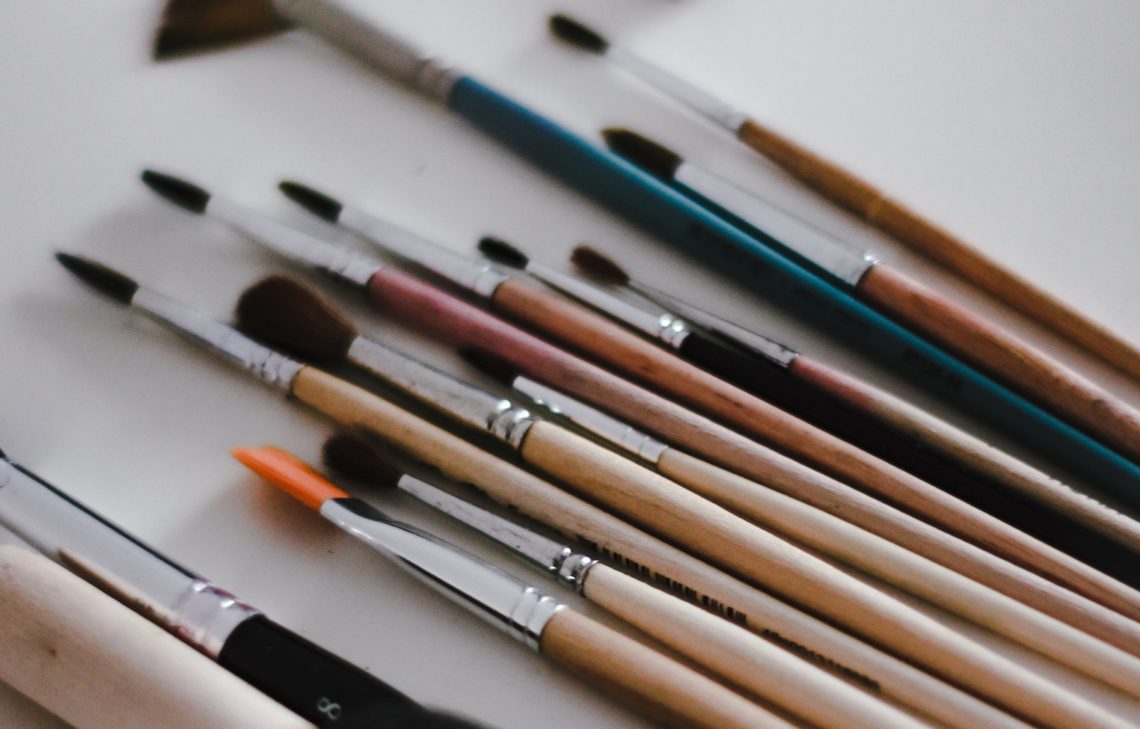Educating your customers on how to care for their brushes is a great way to provide value and maintain a loyal following within your community. If your staff are illustrators or spray artists, they may not be as familiar with the standards of brush care that an oil painter or watercolorist may need. Take time this month to review this department with your staff.
Free Education is Abundant
We’ve provided some great free educational tools through the following links.
On MacPhersonArt.com we have a useful resource for anyone to learn the basics of brushes in our Art Fundamentals section.
Vendor partners like Royal Brush and Princeton, as well as other brush companies in the industry, have excellent resources on their websites. Consider putting QR codes on your displays of these resources to help your customers understand the unique qualities of each brand. Learn how to create a free QR code here.
The Basics
We have plenty of prior art store managers on staff at MacPherson’s. When questioned about the essential information they would give a new hire about this department, they provided the following tips:
- “Ask as many questions as you can of your fellow employees, and do your own research! Brushes can look similar and have a variety of features and benefits that distinguish them. The more familiar you can become with all of the variety, the better guidance you can provide to an overwhelmed new artist (or overwhelmed veteran artist).” Andrew Cook, Savoir Faire Education Manager
- “The brush department is generally overwhelming to a novice. The main topics I’d cover with a new brush seller: natural versus synthetic hair and how synthetic has changed and improved over time, why watercolor brushes are ‘so expensive’, and then I’d reinforce the importance of keeping displays clean and properly organized so a customer has a pleasant experience.” Cassie Brehmer, Key Accounts Manager
- “Assess the consumer. Are they looking for good/better/best, what they are hoping to accomplish? Painting large or small? What surface? What type of paint? Explain the quality changes in good/better/best. If the customer is finishing a one time project, they’d be fine with a less expensive brush in the “good” category! If they’re taking a painting class, they need to step up to the “better” category so they have a positive experience. Especially in watercolor, it’s a loose fluid medium, investing in the “best” is worthwhile.
Find out how they’re working: on a flat surface or easel? They should use a short handle for a table or when working in a pad and use a long handle for an easel project.
When looking at hair type, don’t discount synthetics. They are on trend and they have begun to perform beautifully.” Catherine Thoele, Key Accounts Manager
- “My approach to educating someone about brushes in the retail environment was physically showing them the different types of brushes we sold through an interactive demonstration with different mediums or water. This would allow them to learn about all of the different types and usage. I would also provide reference material that would further explain the differences between short and long handle, natural hair versus synthetics and blends, as well as the names of the basic shapes that they come in.” Steve Turgeon, Savoir Faire Customer Service Manager
Passive Selling: Dos and Don’ts Chart
We’ve created this list for staff and customer education. Compiled by the artists at MacPherson’s, we feel confident these points will start conversations with your customers. We suggest you create a visual with this information—if you haven’t used Canva.com before, we have a handy tutorial to help guide you through the process.
Do:
- Buy the best brushes you can afford.
- Store your brushes flat or suspended upside down.
- Clean your brushes after using and often through the painting process.
- Wipe paint out of your brush with a soft rag before cleaning in fluid.
- Safely dispose of your mineral spirits or cleaning water. Check local guidelines for suggested safe disposal.
- Treat natural hair brushes the way you’d want your hair to be treated. Wash AND condition them, avoid build up, and take care with drying.
- Shape your brushes once they’ve been washed and conditioned.
- Invest in brush storage.
Don’t:
- Put brushes in your mouth, saliva isn’t good for them, traces of solvents and paints aren’t good for you.
- Use your hands to test bristles, instead use your forearm. Oils from your hands will damage the bristles.
- Leave your brushes in water or solvents, unless you want to throw them away.
- Store your brushes head up in a cup.
- Don’t press bristles into the bottom of your cleaning cup.
- Improperly dispose of paint water or solvents.
Have Helpful Products Nearby
Cleaning/Conditioning/Storage
- Generals Brush Cleaner
- Sennelier Green for Oil Brush Cleaner (100ml, and safe for plane travel!)
- Winsor & Newton System
- Silicoil Jar






